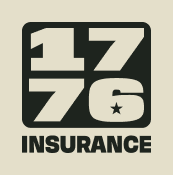Essential Reloading Safety Tips for Every Ammunition Enthusiast
Discover essential reloading safety tips to protect yourself and ensure reliable ammunition. Read the article for practical guidance and best practices.
Reloading Safety: Why It Should Be Every Shooter’s Priority
Reloading can save money and customize performance, but it also carries risks if not handled carefully. A clear safety checklist ensures accuracy, consistency, and peace of mind at the bench.
Loading equipment
Equipping your reloading space with these essentials significantly reduces the risk of serious injury during the process. Key items include:
- Safety glasses to protect your eyes from potential debris.
- Fire extinguishers for emergency situations.
- Gloves to shield your hands.
- Dust mask to prevent inhalation of harmful particles.
Best practices
Adopting safe reloading practices is vital for preventing accidents and ensuring high-quality ammunition:
- Avoid smoking in your reloading area, as it poses a fire hazard.
- Always document and label your loads for future reference.
- Stay focused and avoid distractions while reloading.
- Read the manufacturer’s instructions for each component you are using.
- Don’t mix different powder types.
- Practice good housekeeping and promptly sweep any spilled powder or other debris.
Safe storage
Proper storage of reloading components is crucial to ensure safety and longevity.
- Always store gun powder and primers separately to minimize the risk of fire or explosion.
- Keep them in a cool, dry location.
- Store powder in its original factory container with the caps securely tightened.
- Store primers in their original packets to prevent damage and maintain their effectiveness.
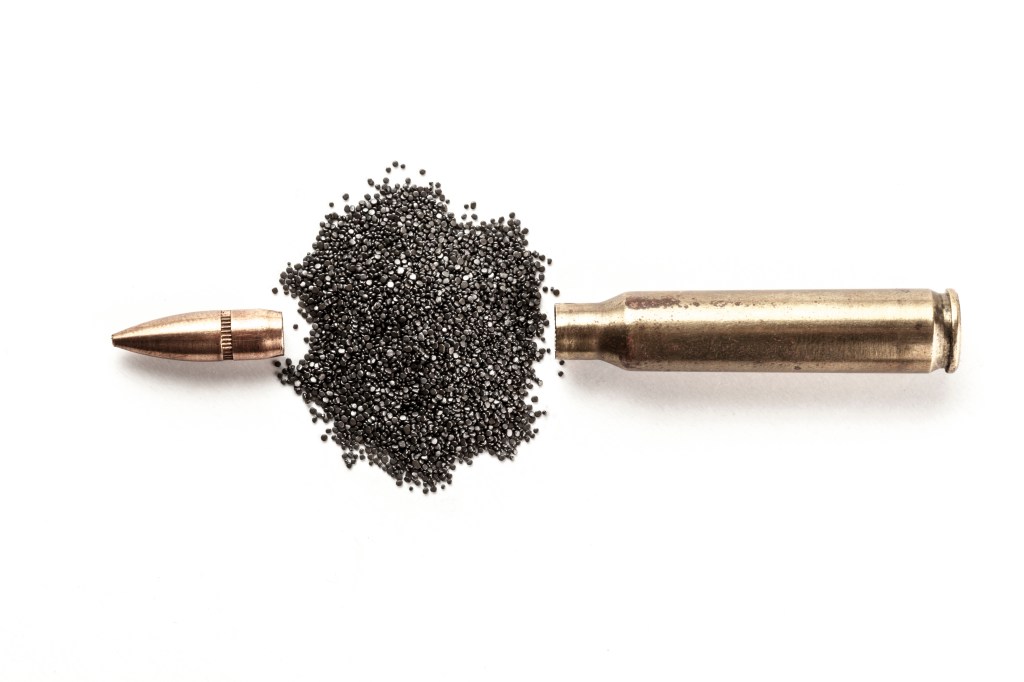
Setting Up a Safe Reloading Space
Before the first round is ever made, the space itself matters. A clean, well-lit, and distraction-free reloading bench minimizes hazards and helps you focus on each step of the process. Establishing a safe reloading environment is crucial for both efficiency and safety.
Safety measures
To reduce the risk of personal injury, always use proper personal protective equipment (PPE) that is damage-free and in good condition. Regularly check that fire extinguishers are up to date. Keep the reloading space secure from children, and if that’s not possible, store all supplies out of their reach.
Loading area
A well-organized reloading bench is essential for effective reloading. Keep all necessary supplies, powders, cartridge cases, and components within reach while minimizing clutter. A well-lit workspace enhances visibility and reduces the risk of mixing powders and primers. Consider removing any carpeting or rugs, as they conduct static electricity.
Maintaining focus
Optimize your reloading bench for a distraction-free process by keeping your equipment organized and accessible. This helps maintain focus and minimizes serious injury.
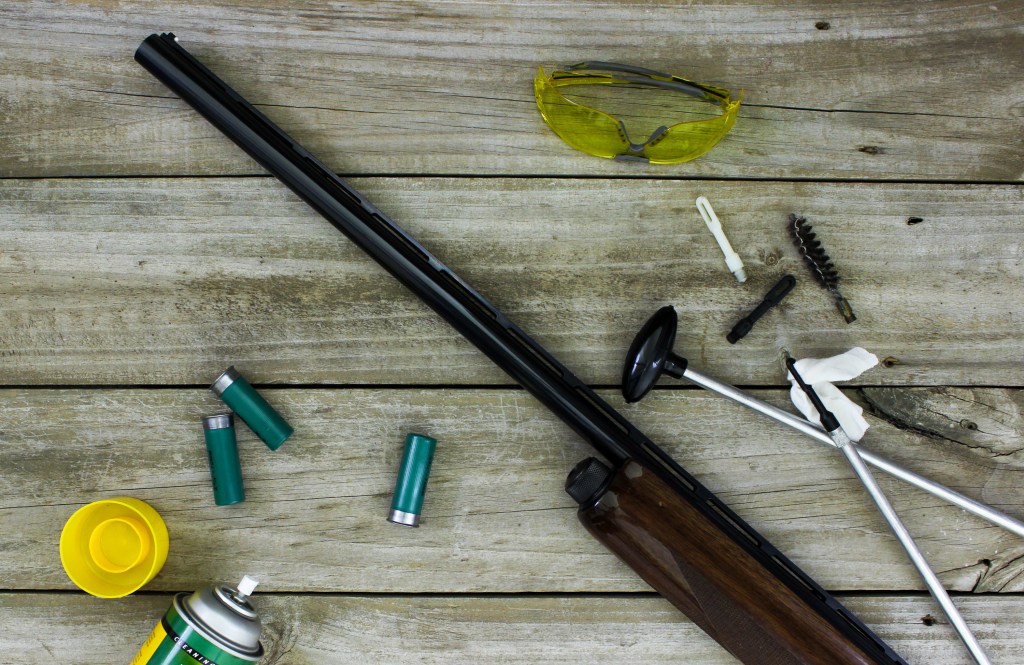
Handling Powder and Primers with Care
Powder and primers require careful handling; a single mistake can result in disaster. Proper storage and accurate measurements are crucial for safe and efficient reloading. Understanding powder handling and primer safety helps prevent misfires and ensures smooth reloading.
Powder handling
Handling powder requires caution, especially for beginners. It’s best to have an experienced person guide you and always to read the manufacturer’s instructions for the correct powder charge weight. Keep powder away from heat sources and choose powders that avoid double-charging. Implement checks to prevent under- or over-charging, never mix different powders, and store them in a cool, dry place.
Primer safety
To ensure safety when handling primers, always wash your hands afterward and avoid food and water in the area. Primers contain lead residue, so taking the time to wash up after you handle it is best. Store them in their original container, away from sunlight, in a cool, dry place, and label them clearly to prevent mix-ups during reloading.
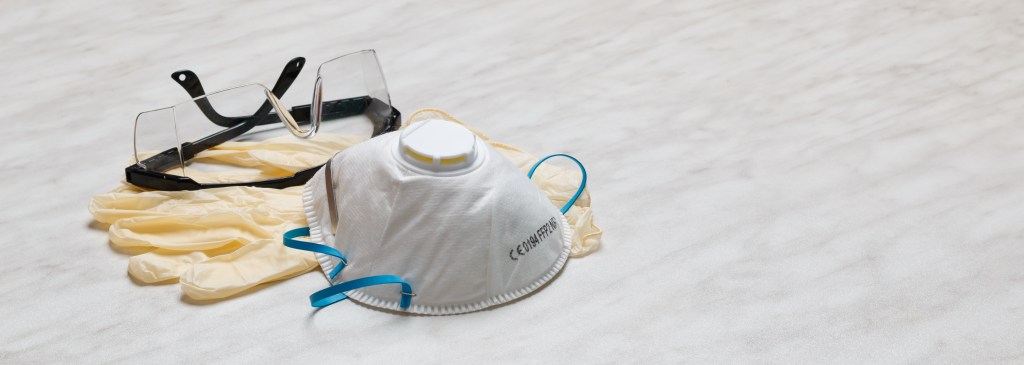
Tools, Equipment, and Maintenance Essentials
Every press, scale, and seating die plays a crucial role in safe reloading. Regular inspection, calibration, and proper tool storage are essential practices that help prevent errors, which could lead to dangerous ammunition failures.
Reloading equipment
- Reloading Press: A reloading press is an indispensable tool for any loading bench. It aligns the die and shell holder, ensuring that each round is loaded correctly and consistently.
- Shellholder: The shellholder is critical as it keeps the cartridge aligned during reloading. To maintain precision, it is important to choose a shellholder that fits the cartridge you are working with.
- Priming Units and Trays: Priming units enhance accuracy by ensuring proper primer placement. They are paired with a priming tray, which orients the primers on one side to ensure they are correctly positioned.
- Reloading Scale: A reliable reloading scale is necessary for achieving accurate powder charges, which is fundamental for consistent ammunition performance.
- Funnel Pan and Loading Blocks: A funnel pan helps transfer powder into the case and prevents spills. Loading blocks keep your workspace organized for efficiency and minimize mistakes.
- Caliper: A caliper is an important tool for measuring critical dimensions such as the depth of the primer, case length, and cartridge length.
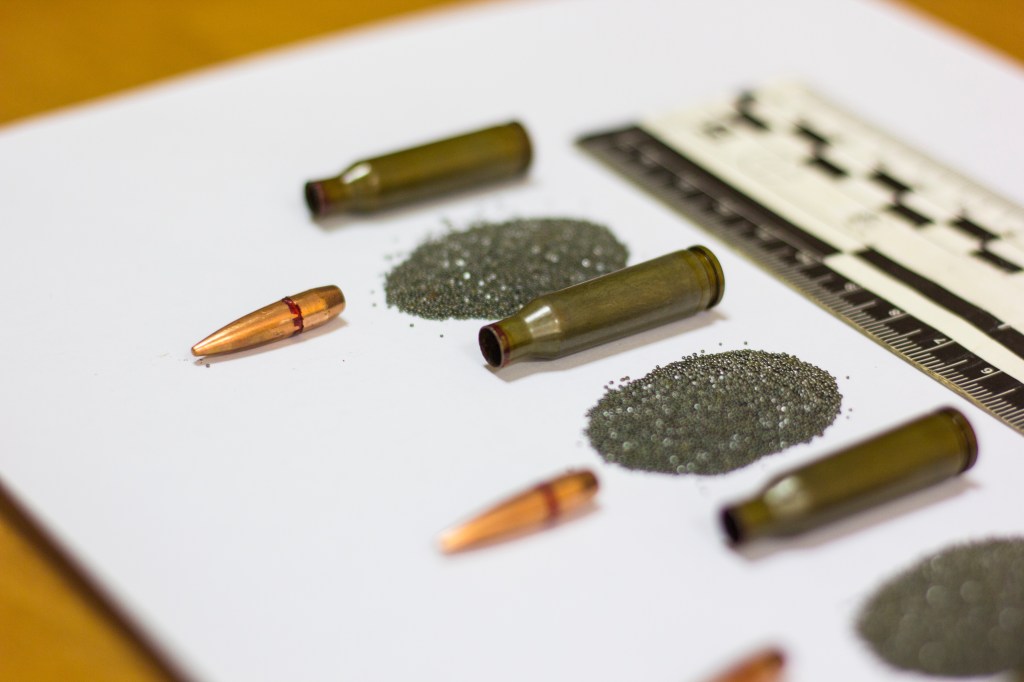
Step-by-Step Reloading Safety Checklist
A reliable checklist is essential for staying on track and preventing oversight during the ammo reloading process. Double-check each phase to avoid mistakes and enhance safety.
Prioritize safety
Always prioritize safety in your reloading space. Keep it equipped with essential tools and free from distractions. Wear protective eyewear and gloves when handling chemicals to protect your health:
- Focus on One Component at a Time: To ensure accuracy, work with one type of powder and cartridge case at a time. This prevents mixing powders and serious safety issues. Focusing on one component streamlines the process and enhances precision.
- Measurement and Methodology: Always follow the manufacturer’s instructions when measuring powder. Start with small amounts and work methodically to maintain control during the reloading process.
- Double-Check at Every Step: As you go through your checklist, double-check each action to ensure safety and accuracy. Your undivided attention during the reloading process helps catch potential mistakes before they become issues.
- Keep Components Organized: Maintaining order is essential when reloading ammunition. Keep all components in their original, labeled containers to avoid mix-ups and confusion.
- Handle Spills Properly: If a powder or primer spill occurs, clean it up with a broom to avoid sparks from a vacuum. Never reuse spilled powder; dispose of it safely to prevent hazards.
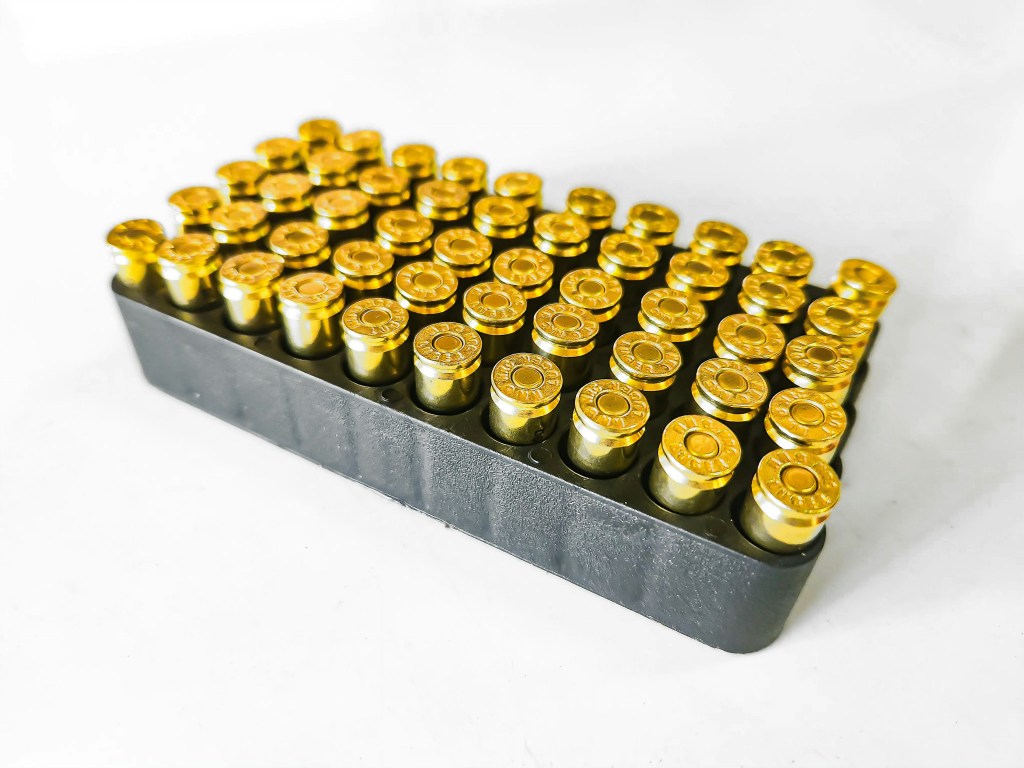
Common Reloading Mistakes and How to Avoid Them
Overcharging a case, improper bullet seating, or neglecting worn brass can all spell trouble. Learning from the most frequent mistakes ensures your reloads are safe, accurate, and consistent.
Reloading session
Follow essential safety rules to create a safe reloading environment. Ensure all tools and supplies are ready, including personal protective equipment (PPE), a fire extinguisher, your reloading press, brass cases, primers, powder, dies, and a reloading manual.
Familiarize yourself with the reloading data and avoid reloading cartridges without the correct specifications. Thoroughly inspect brass cases for debris and damage; if you find any issues, dispose of the faulty brass to ensure safe reloading.
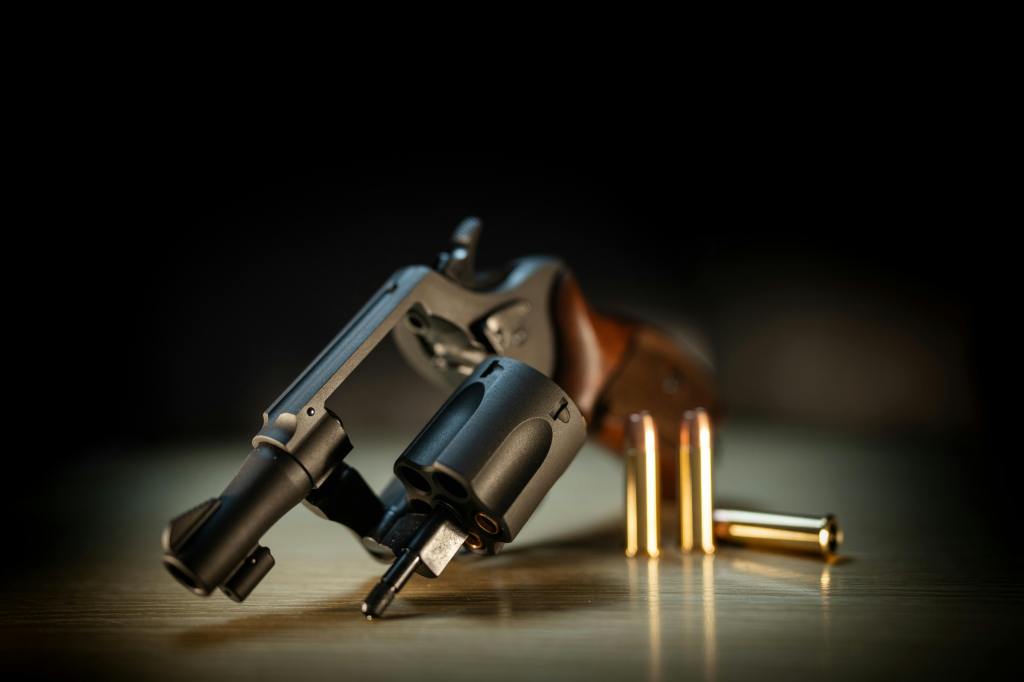
Protecting Yourself During the Process
Reloading safety isn’t just about the ammo—it’s also about the reloader. Wearing protective glasses, using proper ventilation, and handling materials with gloves protect you from unexpected accidents.
Wearing protective glasses safeguards your eyes from potential debris or any shrapnel that can occur during high-pressure situations. Proper ventilation minimizes inhalation risks from harmful fumes and dust. Additionally, handling materials with gloves prevents direct contact with residues, particularly those related to lead exposure, which can pose significant health risks.
The Insurance Side: Protecting Your Investment in Gear and Firearms
Reloading gear, tools, and firearms represent a major investment. Specialized firearm insurance ensures you’re covered if equipment is damaged, stolen, or compromised in an accident. Securing the right insurance policy is essential to safeguarding your investment and preserving your passion.
This article is intended for informational purposes only. Collectibles Insurance Services, LLC, its parents, affiliates, and anyone connected with them are not responsible or liable in any way for your use of the information contained in or linked to from this article. Reliance on the information provided in this article is solely at your own risk. If you have questions about any of the topics addressed in the article, please contact a subject-matter expert.
Sources
https://bergerbullets.com/shoot-better/shooting-knowledge/basic-reloading-safety/
https://www.titanreloading.com/blog/important-reloading-safety-procedures/
https://www.longrangeshooting.org/articles/hand-loading-safety-tips
https://www.remington.com/safety-information/safety-shooting-cleaning-tips/safe-reloading-procedures.html
https://www.lymanproducts.com/start-reloading/
https://www.canadabrass.ca/blogs/when-the-smoke-clears/step-by-step-guide-reloading-ammunition-using-a-single-stage-reloading-press
https://www.americanrifleman.org/content/5-reloading-safety-tips/
